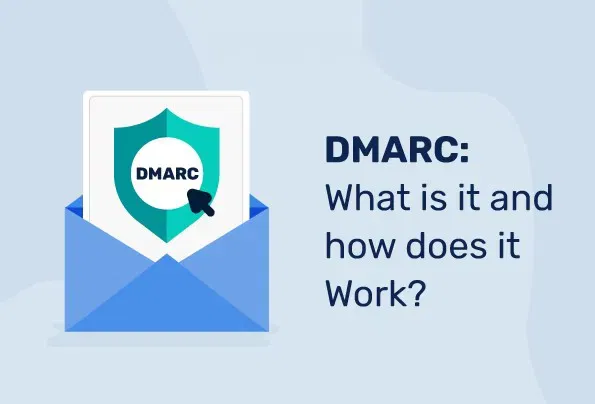DMARC Checker Tool
Use our tool for DMARC lookup and record validation
Use our free DMARC checker tool to analyze your record and conduct a quick DMARC record check. Get 100% accurate results about your DNS record’s validity and settings within seconds, and increase the deliverability of your legitimate emails.
Lookup and Validate your DMARC Record
Our DMARC checker online helps domain owners conduct a quick DMARC lookup to fish for possible errors in their DMARC record. More than just a DMARC validator, it is a DMARC diagnostic tool that gives you an in-depth analysis of your record. A DMARC check is essential to ensure that you have not erred while manually configuring your record. The DMARC lookup also confirms that your record is valid and fully functional.
What’s even better? Our DMARC record checker is completely free to use an unlimited number of times, no sign-ups or payment is required!

How to Use DMARC Checker?
To use our DMARC record lookup tool and conduct a quick DMARC lookup:

Validate and Check DMARC Information In 1 Second
Our DMARC record checker tool is instant and accurate! The DMARC tool instantly becomes aware of whether or not DMARC is enabled for your sender domain and conveys the same on screen. You can check the status of your record in DNS by searching for a small green section under “DMARC status”:
You can also find the validity status under additional information about your record:
DMARC Record Syntax Explained
Getting your DMARC record syntax correct is the first step towards ensuring a valid record. Your record consists of several tags which represent specific instructions for receiving servers. Given below are some common tags you can add to your DMARC record, and what they stand for:
Version Tag: The version tag (v) specifies the version of the DMARC protocol being used. The syntax is: v=DMARC1;
This indicates that the record follows the DMARC version 1 specification.
Policy for Domain Alignment: The policy tag (p) specifies the policy to apply to messages based on the alignment of the “From” domain with domains found in both the DKIM (DomainKeys Identified Mail) and SPF (Sender Policy Framework) authentication results. The syntax is: p=;
Possible policy values are:
none: No specific action should be taken.
quarantine: The message should be treated with suspicion.
reject: The message should be rejected.
Percentage Tag: The pct tag specifies the percentage of messages subjected to the DMARC policy. The syntax is: pct=;
The value can range from 0 to 100. It represents the percentage of messages subjected to DMARC policy. For example, pct=25 means that only 25% of messages should be subjected to the policy.
Reporting Tags: These tags specify where DMARC reports should be sent. There are two types of reports: aggregate reports (RUA) and forensic reports (RUF). The syntax for these tags is:
rua=mailto:address@example.com;
ruf=mailto:address@example.com;
rua: Specifies the email address to which aggregate reports (RUA) should be sent.
ruf: Specifies the email address to which forensic reports (RUF) should be sent.
Subdomain Policy Tag: The sp tag specifies the policy to apply to subdomains of the domain. The syntax is:sp=;
This tag has the same policy values (none, quarantine, reject) as the policy tag.
Domain Alignment Tag: The aspf and adkim tags specify the SPF and DKIM alignment modes. The syntax is: adkim=;
The can be r (for relaxed) or s (for strict).
Failure Options: The Failure Options tag represents in which cases you want to receive forensic reports. The syntax is: fo=;
Possible values for the fo tag:
0 (Zero): This value instructs receivers to generate failure reports if an email fails both SPF and DKIM alignment.
1 (One): This value instructs receivers to generate failure reports if an email fails both SPF and DKIM alignment.
d (DKIM): This value instructs receivers to send a DMARC failure report only if the failure is due to DKIM authentication alignment issues.
s (SPF): This value instructs receivers to send a DMARC failure report only if the failure is due to SPF authentication alignment issues.
DMARC Tools to Start Your Email Authentication Journey
Start your DMARC journey with a syntactically and technically accurate DMARC record with our DMARC record checker! Instantly validate DMARC records for multiple domains with PowerDMARC and run an unlimited number of DMARC lookups.
When you use our DMARC record checker, we help you visually verify the authenticity of your DNS record in the form of a simplified report that is easy to navigate and understand for even non-tech people.
Our services span beyond our DMARC checker and validator tools, to equip you with the necessary solutions required to solidify your organization’s email authentication posture, prevent phishing attacks, and improve your email security and email deliverability.

